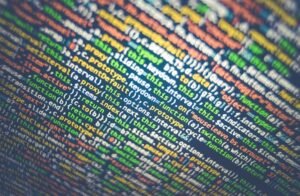NLP Is Machine Learning
Introduction
Natural Language Processing (NLP) involves the interaction between computers and human language. It is a subfield of Artificial Intelligence (AI) that uses Machine Learning (ML) techniques to analyze, understand, and generate human language. NLP is widely used in various applications, such as machine translation, sentiment analysis, chatbots, and voice assistants.
Key Takeaways
- NLP is a subfield of AI that utilizes ML techniques.
- NLP enables computers to analyze, understand, and generate human language.
- Applications of NLP include machine translation, sentiment analysis, and chatbots.
NLP Techniques and Machine Learning
NLP utilizes various ML techniques to process and understand language. These techniques include:
- Supervised Learning: ML models are trained using labeled data to perform tasks like text classification and named entity recognition. An example sentence could be classified as “positive” or “negative” sentiment. Supervised learning provides a training signal for the model to learn from.
- Unsupervised Learning: ML models analyze unlabeled data to discover patterns and structures. It can be used for tasks like text clustering and topic modeling. Unsupervised learning allows the model to find hidden relationships within the data.
- Reinforcement Learning: ML models learn through a trial-and-error process, where they receive feedback in the form of rewards or penalties. This technique can be used in dialogue systems and language generation. Reinforcement learning helps the model improve its actions based on received feedback.
NLP Applications and Data Points
NLP has a wide range of applications, and it has become an essential component of many technologies we use today. Here are some notable examples:
| NLP Application | Data Points |
|---|---|
| Machine Translation | Translates text from one language to another, enabling cross-language communication. |
| Sentiment Analysis | Assesses the sentiment expressed in textual data, helping businesses understand consumer opinions. |
| Chatbots | Engage in conversations with users, providing automated assistance and support. |
Benefits of NLP in Machine Learning
NLP plays a crucial role in enhancing various ML applications. By incorporating NLP techniques, machine learning models can:
- Extract meaningful information from unstructured text data.
- Improve accuracy and efficiency in language-related tasks.
- Facilitate better understanding of user needs and preferences.
- Enable interactive and human-like interactions between machines and humans.
NLP Challenges and Future Trends
While NLP has made significant advancements, there are still challenges to overcome. Some of these include:
- Contextual understanding and disambiguation of language.
- Handling diverse languages and dialects.
- Resolving coreference and anaphora resolution.
As technology advances, we can expect future trends in NLP like:
- Improved language understanding using deep learning techniques.
- Enhanced multilingual capabilities and cross-cultural understanding.
- Seamless integration of NLP with emerging technologies like knowledge graphs and robotics.
Summary
NLP, a subfield of AI, utilizes ML techniques to enable computers to analyze, understand, and generate human language. It has a wide range of applications and provides numerous benefits to machine learning. Although challenges remain, the future of NLP looks promising with advancements in deep learning and integration with other technologies.

Common Misconceptions
Misconception 1: NLP is the same as Machine Learning
One common misconception about Natural Language Processing (NLP) is that it is the same thing as Machine Learning (ML). While there is overlap between the two fields, they are not identical. NLP is a branch of artificial intelligence that focuses on the interaction between computers and human language, whereas Machine Learning is a subset of AI that involves the development of algorithms and statistical models for machines to learn from data.
- NLP involves processing and understanding natural language texts.
- ML involves developing algorithms for machines to learn from data.
- NLP tasks often use ML techniques, but NLP is not limited to ML.
Misconception 2: NLP can accurately understand all aspects of human language
Another misconception is that NLP can fully and accurately understand all aspects of human language. While NLP has made significant progress in recent years, it still faces challenges in understanding context, sarcasm, ambiguity, and complex grammar rules. Language is inherently nuanced and context-dependent, making it difficult for machines to completely grasp the subtleties of human communication.
- NLP struggles with contextual understanding and interpretation.
- Machines may misinterpret sarcasm and ambiguity in language.
- Complex grammar rules can be challenging for NLP systems.
Misconception 3: NLP can translate languages perfectly
Many people assume that NLP can provide perfect translation between languages, but this is not entirely accurate. While NLP has enabled significant advancements in machine translation, achieving perfect translation is still impossible. Translating language involves capturing cultural nuances, idiomatic expressions, and idioms, which can be challenging for NLP systems. Translations can also vary based on context and subject matter.
- NLP machine translations may struggle with capturing cultural nuances.
- Idioms and idiomatic expressions can be challenging for NLP systems to translate accurately.
- Translations can vary based on context and subject matter.
Misconception 4: NLP completely eliminates the need for human involvement
Some people have the misconception that NLP can fully replace human involvement in language-related tasks. While NLP has introduced automation and efficiency in various applications, it still requires human involvement. NLP systems need human training, monitoring, and input for continuous improvement. Human review is also crucial for ensuring the accuracy and ethical usage of NLP applications.
- NLP systems require human training and monitoring for continuous improvement.
- Human review is essential to maintain accuracy and ethical usage of NLP applications.
- NLP does automate certain tasks, but human involvement remains necessary in many cases.
Misconception 5: NLP is only used for text analysis and chatbots
Lastly, another common misconception is that NLP is only used for text analysis and chatbot development. While these are prominent applications of NLP, the field extends beyond that. NLP techniques are utilized in various areas, such as sentiment analysis, recommendation systems, information retrieval, text summarization, and even speech recognition. NLP has diverse applications across multiple industries.
- NLP techniques are used in sentiment analysis to understand emotions in text.
- NLP is employed in recommendation systems to provide personalized suggestions.
- NLP plays a role in speech recognition to convert spoken language into text.

NLP vs Machine Learning: A Comparative Overview
Natural Language Processing (NLP) and Machine Learning are two interrelated fields within the realm of artificial intelligence. While NLP focuses on the interpretation and generation of human language, Machine Learning encompasses the development of algorithms that can learn from data and make predictions or decisions. In this article, we explore various aspects of NLP and Machine Learning and highlight their uniqueness and commonality through a series of descriptive tables.
Table: Applications of NLP
NLP finds applications across different domains, contributing to advancements in various fields such as:
| Domain | Examples |
|---|---|
| Virtual Assistants | Amazon Alexa, Apple Siri |
| Messaging Apps | Facebook Messenger, WhatsApp |
| Machine Translation | Google Translate, DeepL |
| Text Summarization | Sumy, TextTeaser |
Table: Types of Machine Learning
Machine Learning techniques can be broadly categorized into the following types:
| Type | Description |
|---|---|
| Supervised Learning | Uses labeled data for training |
| Unsupervised Learning | Clusters data without labeled examples |
| Reinforcement Learning | Guided by rewards and punishments |
| Deep Learning | Utilizes neural networks for complex tasks |
Table: Common NLP Techniques
NLP techniques enable machines to understand and generate human language using methods like:
| Technique | Examples |
|---|---|
| Tokenization | Breaking text into individual words or phrases |
| Named Entity Recognition (NER) | Identifying specific entities in text (people, places, etc.) |
| Part-of-Speech (POS) Tagging | Assigning a grammatical tag to each word in a sentence |
| Sentiment Analysis | Determining the sentiment expressed in text (positive, negative, neutral) |
Table: Machine Learning Algorithms
Machine Learning algorithms serve as building blocks for training models and making predictions:
| Algorithm | Application |
|---|---|
| Linear Regression | Predicting continuous values |
| Random Forest | Classification, regression, and feature selection |
| Support Vector Machines (SVM) | Classification and regression |
| Deep Neural Networks (DNN) | Image and speech recognition, natural language processing |
Table: NLP Challenges
Despite significant advancements in NLP, a few challenges persist:
| Challenge | Description |
|---|---|
| Ambiguity | Multiple interpretations of a sentence |
| Language Diversity | Variations in language across regions and demographics |
| Context Understanding | Grasping the contextual meaning of words or phrases |
| Data Privacy | Ensuring privacy in handling sensitive textual data |
Table: Machine Learning Libraries
A variety of open-source libraries facilitate the implementation of Machine Learning:
| Library | Description |
|---|---|
| Scikit-learn | Easy-to-use tools for data mining and analysis |
| TensorFlow | Library for building and training neural networks |
| PyTorch | Deep learning library emphasizing flexibility and performance |
| Keras | Neural networks library with a focus on simplicity |
Table: NLP in Social Media
NLP plays a significant role in capturing insights from social media platforms:
| Platform | NLP Applications |
|---|---|
| Sentiment analysis, trend analysis | |
| Newsfeed personalization, content recognition | |
| Image captioning, comment sentiment analysis | |
| Job recommendations, resume analysis |
Table: Future Directions
NLP and Machine Learning continue to evolve, paving the way for exciting possibilities:
| Direction | Potential |
|---|---|
| Conversational AI | Interacting with machines using natural language |
| Explainable AI | Making AI systems more transparent and interpretable |
| Real-time Language Translation | Enabling seamless communication across languages |
| Domain Adaptation | Customizing NLP models for specific industries or domains |
As NLP and Machine Learning continue to merge their strengths, the future holds immense potential for technology to understand, interpret, and generate human language like never before. The ability to process and comprehend vast amounts of textual data allows us to extract valuable insights, automate tasks, and enhance communication on various levels – from personal assistants to social media analysis. With ongoing advancements, the boundaries of what machines can do in the realm of language are continually expanding.
Frequently Asked Questions
What is NLP?
NLP stands for Natural Language Processing. It is a subfield of artificial intelligence that focuses on the interaction between computers and human language.
What is Machine Learning?
Machine Learning is an approach to artificial intelligence where computers are trained to learn and make predictions or decisions without explicit programming.
How does NLP utilize Machine Learning?
NLP utilizes Machine Learning techniques to process and understand human language. Machine Learning models are trained on large datasets to learn patterns and rules in the language that can be used for various NLP tasks like sentiment analysis, text classification, and language translation.
What are some common NLP tasks?
Some common NLP tasks include text classification, sentiment analysis, named entity recognition, speech recognition, language translation, and information extraction.
Are there any open-source NLP libraries available?
Yes, there are several open-source NLP libraries available such as NLTK (Natural Language Toolkit), spaCy, and Gensim. These libraries provide tools and algorithms to facilitate NLP tasks.
What is the role of data in NLP?
Data plays a crucial role in NLP. Machine Learning models used in NLP require large amounts of labeled data to train and improve their performance. Without sufficient and relevant data, the accuracy and effectiveness of NLP models could be compromised.
What are the challenges in NLP?
NLP faces various challenges such as ambiguity in language, understanding context, handling different languages and dialects, capturing nuances, and dealing with noisy and unstructured text data.
Can NLP help in sentiment analysis?
Yes, NLP techniques can be used for sentiment analysis. Sentiment analysis involves determining the sentiment (e.g., positive, negative, or neutral) expressed in a piece of text and is useful for tasks like analyzing customer feedback or monitoring social media sentiment towards a product or service.
Is NLP only applicable to written text?
No, NLP can be applied to various forms of language communication, including written text, spoken language, and even sign language. However, the techniques and tools used may vary depending on the specific type of language input.
What are some future applications of NLP?
NLP has a wide range of potential future applications, including voice-controlled virtual assistants, automated chatbots, language translation systems, intelligent content analysis, and personalized recommendation systems.




